Ceaseless Flow
[Prototype and Design Proposal]
2022
wood, rattan, acrylic, water beads, LED, custom PCB
Physical Computing
PCB Design
Fabrication
[Prototype and Design Proposal]
2022
wood, rattan, acrylic, water beads, LED, custom PCB
Physical Computing
PCB Design
Fabrication
A decorative luminaire designed to bring tranquility to an acupuncture clinic waiting room.
Collaboration with Jingyao Shao.
Collaboration with Jingyao Shao.
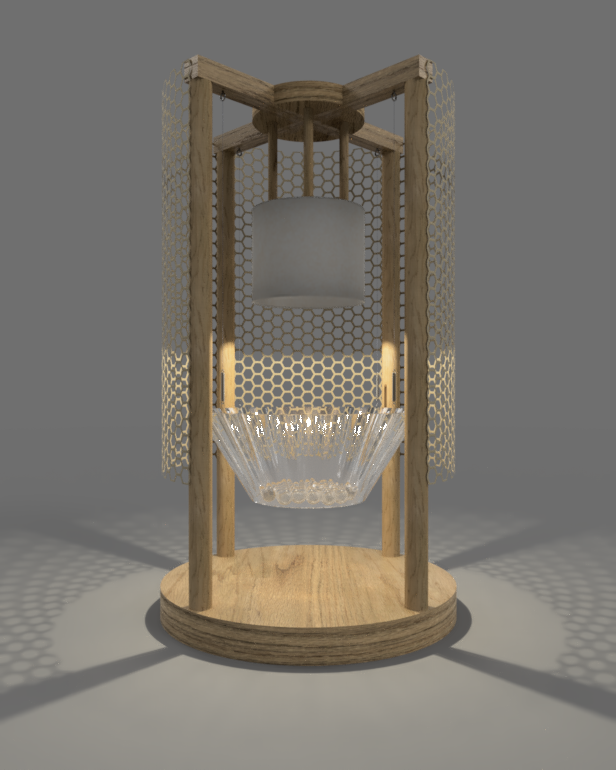
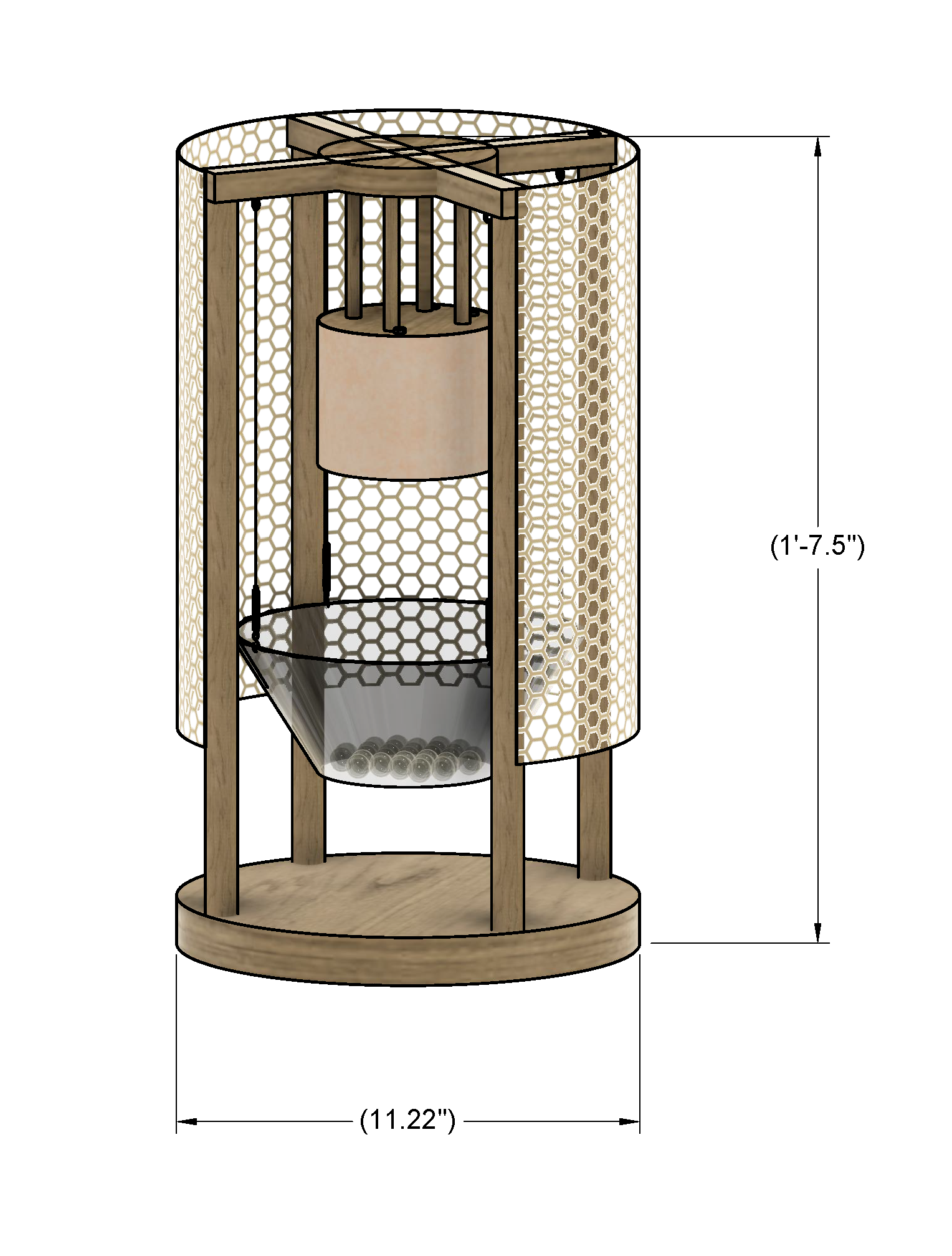
Introduction
Improve experience in acupuncture clinic waiting room
Our design aims to improve the patient’s experience in the pain clinic waiting room, especially for acupuncture therapy. Both coming from east Asian cultural backgrounds, we take inspiration from acupuncture therapy and Chinese medicine for our design. Bringing in the concepts of nature, circulation, Chi, and energy flow, we design a corner table lamp to generate positive influences on the overall experience as well as reduce the patient’s perception of stress and pain in the waiting room.
Nature as a positive distraction for stress release
The waiting room experience in health settings can be stressful and anxious, while this can be influenced by design factors in the environment. Research suggested that “perceived quality of care was higher for waiting rooms that were nicely furnished, well-lighted, contained artwork, and were warm in appearance” (Arenill & Devlin, 2002, p. 350). A positive distraction could play a role in helping patients to shift the focus away from stressful aspects of their mental and physical health (Noble & Devlin, 2021). Nature can be a great source of positive distraction. A study has shown that “Natural elements in hospital environments have the potential to reduce patients’ feelings of stress. By increasing the attractiveness of the waiting room by adding either real plants or posters of plants, hospitals can create a pleasant atmosphere that positively influences patients’ well-being” (Beukeboom et al., 2021, p329). Thus, we decided to bring natural elements to the lamp by incorporating two major design choices: 1. Experimentation with water and fractal patterns generated by water as natural attractions; 2. Use of wood and rattan as natural materials for the construction.

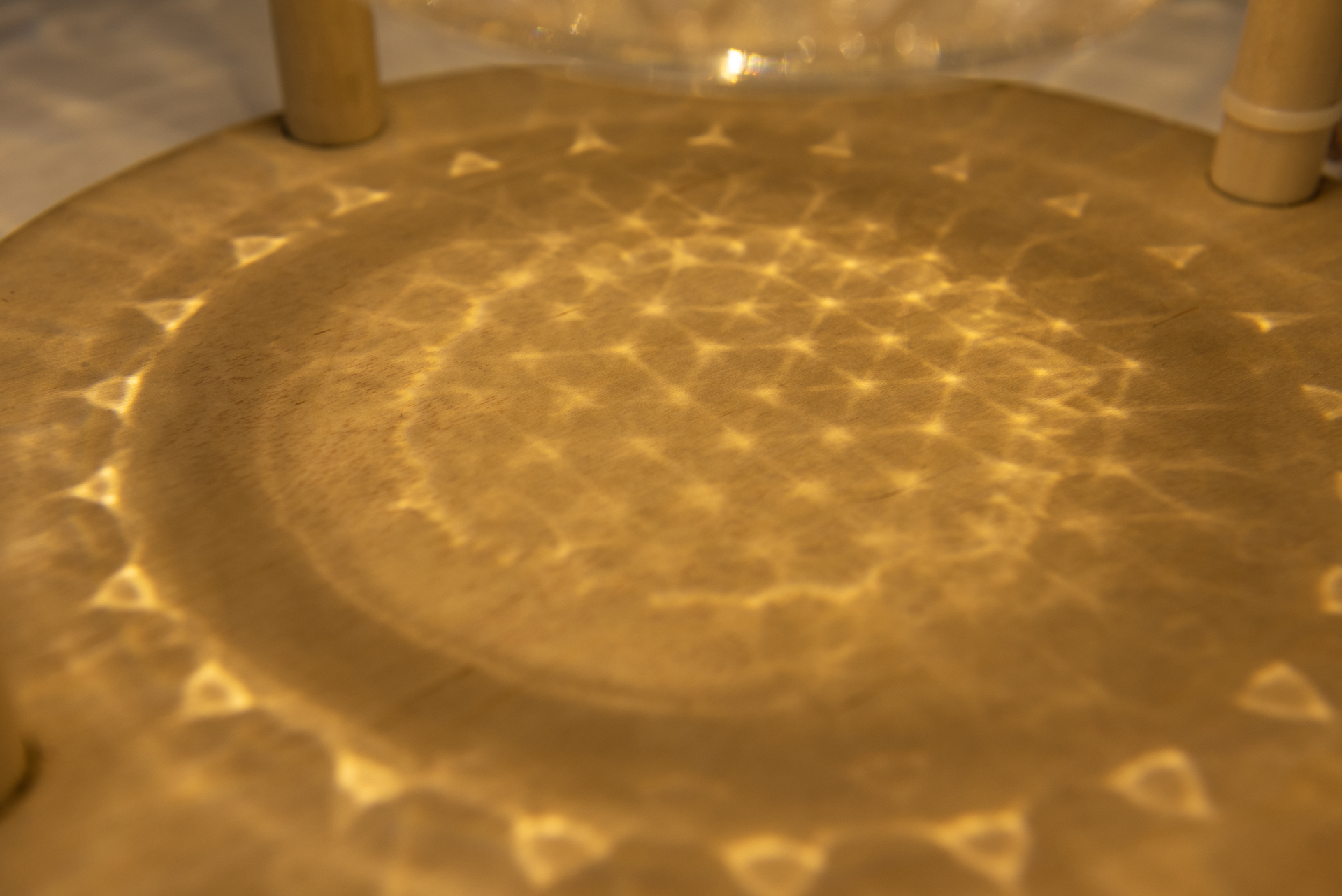
Design with fractals
Fractal pattern, the self-similar pattern which can be easily observed in nature can have a dampening effect on the viewer’s psychological responses to stress (Taylor, 2006). By experimenting with light and mixing water with water beads, a non-toxic and environmentally safe gel that is usually used in plotting plants, we create a water fractal shadow that is attractive to view. Research indicates that contour edge is an important driving factor for the perception of fractals (Rogowitz & Voss, 1990) and image preferences (Spehar et al., 2016). In order to produce a sharp edge for the water fractal patterns, we test with different light sources and decide to use 4 single-channel LEDs for the best result.
Design with natural materials
Rattan usually refers to the palm species growing in tropical forests of Asia. It has been traditionally and commonly used in furniture in Asian countries. This plant material we chose has its natural beauty and also has a comforting warm color. After several site visits to acupuncture clinics, we found that they would avoid bright, direct, and cool lighting to provide a calm and relaxing environment. By using wood and rattan as the main material and color choice, we want to bring tranquility to the waiting room experience.
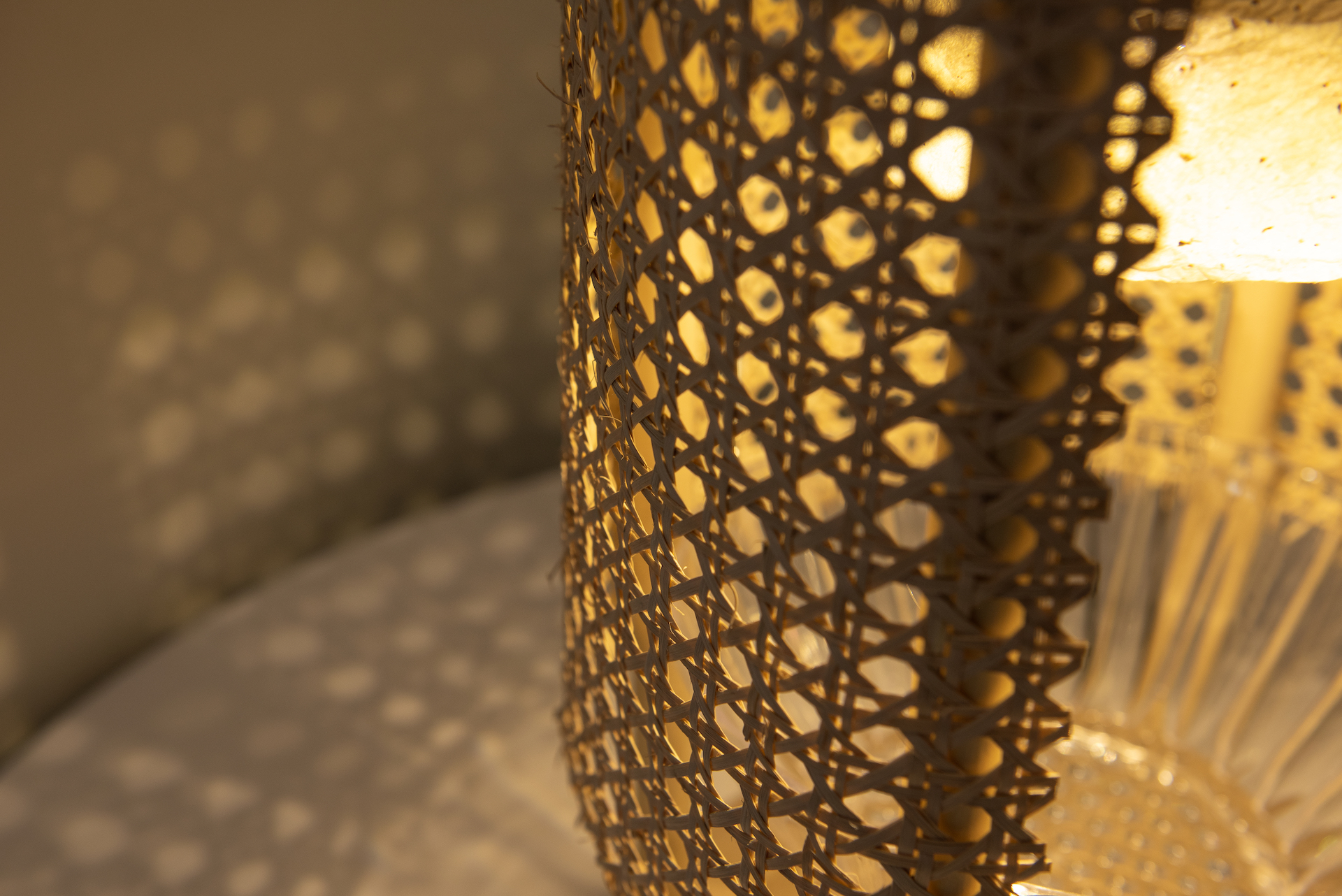
Light engine design
We use four 5W single-channel, single-source LED module. By fading between 1 to 4 small light sources via a microcontroller, ATtiny84, the light engine becomes a multi-channel light source that creates a dynamic shadow-layering effect.
The LED modules each is adhered to a heat sink, and together attached to a thermal-conductive board that also functions as a base structure that is the same size as the PCB. The LED base board and the PCB are layered back-to-back with standoffs in-between. The entire light engine is powered by a 12VDC power supply.
Lamp construction
To create the desired fractal shadow pattern and movement, we place a textured acrylic bowl below the light source. The bowl contains a thin, loose layer of water beads that are partially covered in clean water, and is suspended with fishing line and extension spring to sustain movement when being touched.
The distances between the light source, bottom of the bowl, and the lamp base, as well as the placement of the rattan shade are carefully arranged to achieve the ideal shadow sharpness and draw focus on the bowl sculpture.
Assembly


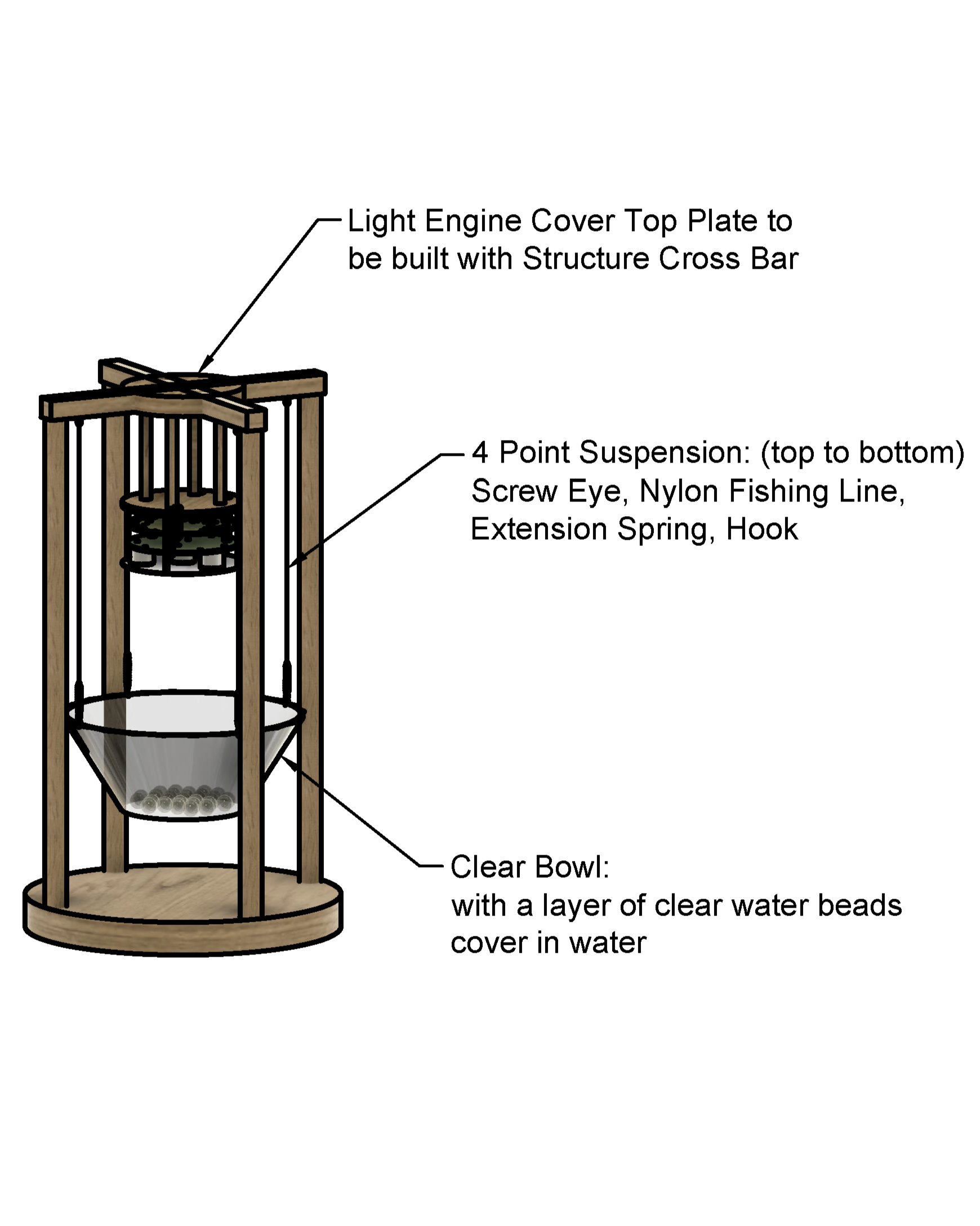

Reference
LINK TO THE REPOSITORY for construction detail drawings, schematic, BOM, research reference, assembly instruction, PCB design and CAD models.